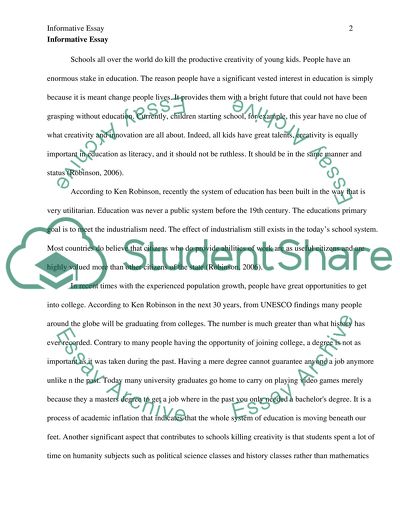Cite this document
(“How Schools Kill Creativity Essay Example | Topics and Well Written Essays - 1250 words”, n.d.)
Retrieved from https://studentshare.org/education/1669605-informative-essay
Retrieved from https://studentshare.org/education/1669605-informative-essay
(How Schools Kill Creativity Essay Example | Topics and Well Written Essays - 1250 Words)
https://studentshare.org/education/1669605-informative-essay.
https://studentshare.org/education/1669605-informative-essay.
“How Schools Kill Creativity Essay Example | Topics and Well Written Essays - 1250 Words”, n.d. https://studentshare.org/education/1669605-informative-essay.


